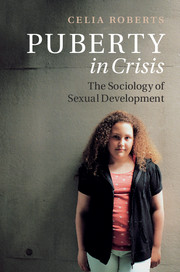Book contents
- Frontmatter
- Dedication
- Contents
- List of figures
- Acknowledgements
- 1 Puberty in crisis? Sex, reproduction and the loss of future
- 2 Articulating findings, feelings and figurations: methods and approaches
- 3 Telling histories: the scientific study of puberty
- 4 Defining early onset puberty: troubling findings about sexual development
- 5 Causes and explanations: genes, fat, toxins and families
- 6 Consequences of early development: sex, drugs and shortness
- 7 Treatments: pharmaceuticals, sex and suffering
- Conclusion: Folding puberty differently: changing findings, feeling and figurations
- References
- Index
- References
References
Published online by Cambridge University Press: 05 August 2015
- Frontmatter
- Dedication
- Contents
- List of figures
- Acknowledgements
- 1 Puberty in crisis? Sex, reproduction and the loss of future
- 2 Articulating findings, feelings and figurations: methods and approaches
- 3 Telling histories: the scientific study of puberty
- 4 Defining early onset puberty: troubling findings about sexual development
- 5 Causes and explanations: genes, fat, toxins and families
- 6 Consequences of early development: sex, drugs and shortness
- 7 Treatments: pharmaceuticals, sex and suffering
- Conclusion: Folding puberty differently: changing findings, feeling and figurations
- References
- Index
- References
- Type
- Chapter
- Information
- Puberty in CrisisThe Sociology of Early Sexual Development, pp. 241 - 278Publisher: Cambridge University PressPrint publication year: 2015



